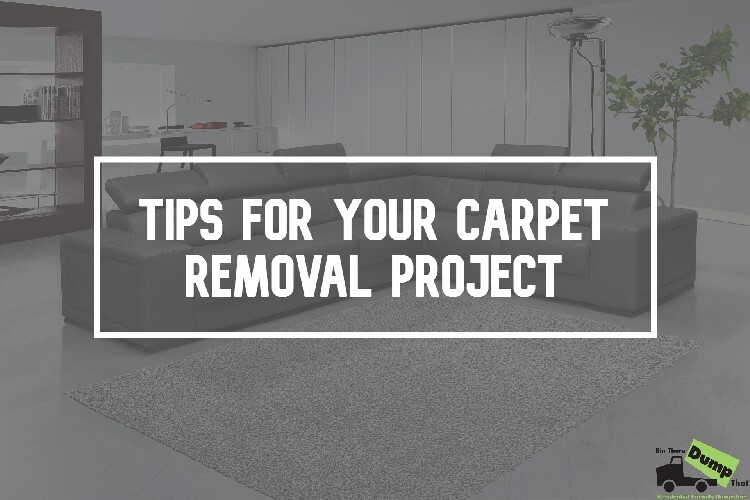
Carpet Removal Project: 3 Useful Tips and The Tools You'll Need
After years of use and many ambitious deep cleanings, you might be ready to part ways with your carpet flooring because it's too high maintenance. It's time to think about removing the carpet. Carpets are available in many colors, textures, and styles; but they're also prone to attracting dirt, debris, and various allergens. Learn how to get rif of old, worn-out carpet from your home before installing brand new floors with this step-by-step guide.
The Disadvantages of Carpet
For homeowners who live in colder parts of the country, carpet can add comfort by keeping their feet warm during the winter. However, it might be easier to have a different type of flooring, such as hardwood, tile, or laminate, if you have multiple pets or a member of your family has severe allergies, or perhaps you're updating a high traffic area such as a mudroom. Depending on the size of your home and your lifestyle, maintaining carpet can be a full-time job, and you may have to deal with the following:
- Excessive pet hair
- Unwanted moisture and mold growth
- Trapped odors
- Debris buildup
If you're planning on switching to a new type of flooring, you can remove carpet yourself before having professionals install your new floors. Use the following guide and DIY checklist to safely dispose of old carpeting.

Getting Started: The Supplies and Tools Needed for Removing Carpet
You'll get the most value out of this DIY project by doing it right the first time. Save money and avoid any potential complications by taking the necessary steps to ensure a safe and thorough removal of your old carpet.
By investing in the proper tools to remove carpet, such as a carpet knife, pry bar, and carpet stretcher, which typically won't exceed $150 in cost, you'll be equipped with everything you need to tackle this task efficiently. Not only will this save you from the expense of hiring a contractor, but it will also give you the satisfaction of accomplishing the project on your own while maintaining a reasonable budget.
Do not attempt to remove your carpet without the appropriate protective equipment. Carpets sit on top of sharp tack strips and have abrasive backings that can cause injuries. To ensure your safety during the removal process, it is crucial to wear heavy-duty work gloves, safety goggles, and knee pads.
These protective gears, along with the necessary tools to remove carpet, will shield your hands from potential cuts and punctures, safeguard your eyes from flying debris, and provide cushioning for your knees as you work on the floor. Additionally, wearing a dust mask is recommended to prevent inhaling dust and allergens that may be stirred up during the removal.
By prioritizing your safety with the right equipment, including the essential tools to remove carpet, you can confidently tackle the carpet removal while minimizing the risk of accidents and ensuring a smooth and successful DIY project.
Step-By-Step Guide to Remove Your Old Carpet

Removing Carpet From Your Stairs
Removing carpet from a staircase is a similar process, but there will be a bit more repetition:
- While wearing gloves, cut the carpet with the utility knife near the risers, which are the vertical planks between each step. Remove and collect the staples and tacks used to secure the carpet as you progress.
- If there's metal nosing at the head of the stairs, use the pry bar to remove it before pulling up the carpet. As you work your way down, cut the carpet into strips so that you can roll up each section and put it aside.

How to Dispose of Your Old Carpet
Getting rid of the old materials will be easier and faster if you roll up and tape the discarded strips of carpet and carpet padding. If you don't know whether your local garbage collection service will get rid of these materials, consider renting a dumpster to ensure a speedy cleanup. You can toss everything into the dumpster, including the tack strips, and if you happen to have old couches or furniture, you can take advantage and toss that too!
With the proper tools, you can get any home renovation done easily, including removing your old carpet. Like with any renovation, you're bound to have a ton of debris left over that you'll need hauled away.
Bin There Dump That offers an array of residential-friendly dumpsters that can be conveniently scheduled for pick-up and drop-off at your convenience. We offer affordable pricing for rentals used for full-home carpet removals, as well as excellent customer service. We've worked with homeowners across the United States to help them complete a wide variety of renovation projects, including removing carpet from their homes. To schedule a roll off dumpster rental, find a Bin There Dump That location near you.
Related Blog Posts
- Revive Your Home for Spring with This Spring Home Maintenance Checklist
- 10 New Home Trends That Will Make Your Friends Jealous
- How Our Dumpsters Support Realtors and Property Managers: A Comprehensive Guide
- 12 Jaw-Dropping Clutter Statistics That Will Make You Want to Declutter Today!
- Unlocking Space: The Complete Guide on Pocket Door Installation
- Step by Step Guide on How to Install Carpet Like a Pro




